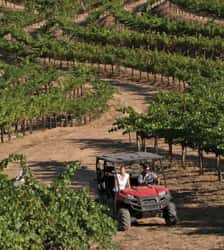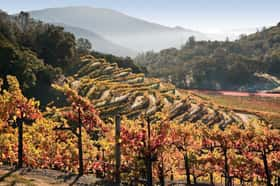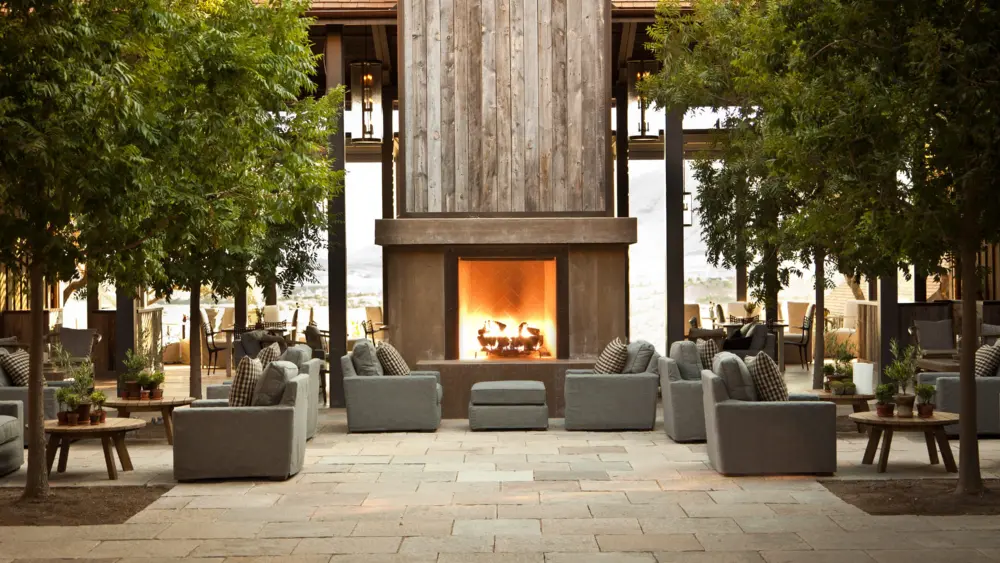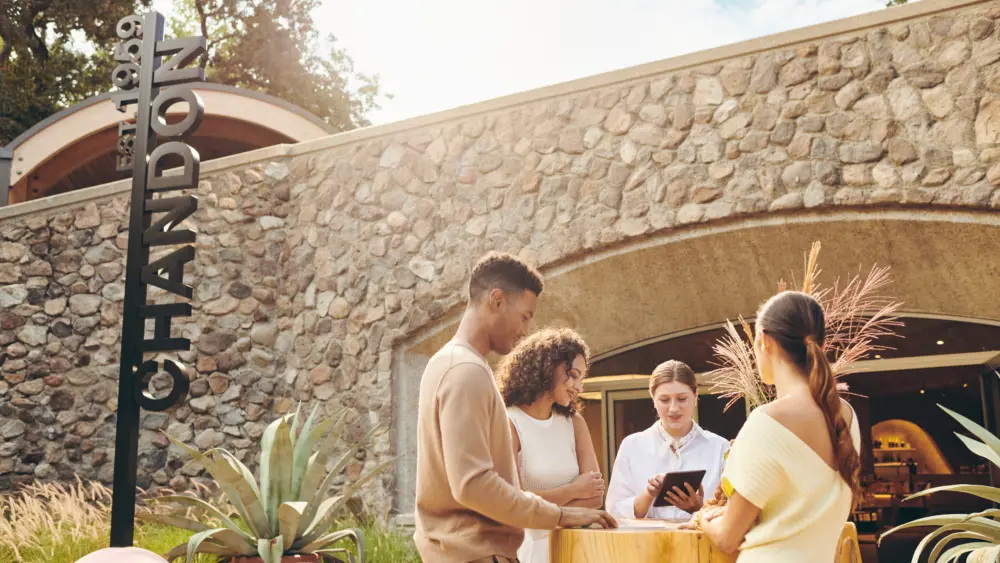Somerston Estate
3450 Sage Canyon Road, St. Helena
(707) 944-8200
www.somerstonwineco.com
Varietals planted on property : Barbera, Black Hamburg, Cabernet Franc, Cabernet Sauvignon, Chardonnay, Grenache, Grenache Blanc, Malbec, Merlot, Petite Sirah, Petit Verdot, Port varietals, Primitivo, Sauvignon Blanc, Semillion, Syrah, Tempranillo, Viognier and Zinfandel
Tasting Fee: $75 for estate tour and tasting; $45 for picnic lunch and tasting.
Reservations: Required
Somerston Estate Tasting Room
6490 Washington Street, Yountville
(707) 967-8414
Hours: Sunday through Wednesday, 1 p.m. to 8 p.m.; Thursday through Saturday, noon to 9 p.m .
Tasting fee: $20 (Priest Ranch varietals: Cabernet Sauvignon, Petite Sirah, Zinfandel and Sauvignon Blanc)
Did you know?
Soda water from the estate’s natural spring was bottled and sold by the Priest family from the late 1800s through the early 1900s.
You don’t need a farmer’s hand or a winemaker’s palate to enjoy the combination tour and tasting at Somerston Estate. But you do need a sense of adventure. 

The estate is nestled in the hills above Silverado Trail, 12 miles east of Rutherford on winding Sage Canyon Road. This is Napa Valley off the beaten path: less predictable weather, more rugged scenery and only a few cars on the road.
“We appeal to people who’ve already done the valley and want something different,” says Craig Becker, Somerston’s general manager and director of winemaking and viticulture. “It’s about the soil and microclimates here. We’re more like the old Napa Valley; it’s about our land.”
The Somerston story
The estate encompasses two historic parcels—Soda Valley (Priest Ranch) and Elder Valley (Lynch Ranch)—first developed by Europeans in the mid-1860s. The landscape here is incredible: 1,628 acres total, with two valleys, three ridgelines, a nearly 1,600-foot change in elevation and a blend of cultivated land and open space.
International real estate developer Allan Chapman purchased Priest Ranch in 2004 and Elder Valley in 2006. That same year, Chapman and Becker joined forces to form and develop the Somerston Estate; today Chapman is the CEO and proprietor, while Becker runs the business.
Somerston sells three brands:Highflyer, a collection of single-vineyard wines from unique California vineyards (including Somerston’s); Priest Ranch, mid-priced Estate wines that are crafted from grapes grown on multiple blocks of the Somerston estate; and the eponymous Somerston label, more expensive, limited-production wines from single vineyard estate blocks.
Off property, Somerston operates a gorgeous tasting room in Yountville filled with artifacts from the ranch. The Yountville site hosts a number of special events throughout the year and serves as the company’s window to the world.
A tour to remember
Becker and his hospitality team developed the estate tour to court serious wine collectors and deepen the relationship with Somerston wine club members. The tour showcases Somerston’s natural resources, historic treasures and, of course, its world class vineyards. With a wine specialist as your driver and guide, you travel across more than 250 acres on the estate in an all-terrain, open-air vehicle (think golf cart with off-road tires). The tour stops at several vineyard blocks, at one of the property’s lakes and at the renovated Priest Ranch barn (now used for events) before returning to the tasting room. An additional stop at the state-of-the-art wine production facility is available by request.
Five wines are served at different points before, during and after the tour. Most recently, these included the 2011 Priest Ranch Sauvignon Blanc (smooth and citrusy), the 2009 Somerston Sauvignon Blanc (hints of pineapple with a creamy finish), the 2009 Priest Ranch Petite Sirah (thick, plummy and velvety smooth) and the 2009 Somerston Stornoway Estate Red (72 percent Merlot and 28 percent Cab Franc with a beautiful nose).
“People really enjoy being able to see and learn about the different vineyard locations we have, and then compare that to the wines they’re tasting,” says Sean Pakenham, Somerston’s tasting room manager.
Creating agricultural diversity
The mid-July day I toured the estate, an unexpected front made for drippy, cool conditions. But the drizzle couldn’t dampen my experience. The estate was buzzing with activity, and my guide, Craig Becker, seemed eager to show off the property.
Becker is a rarity in the wine industry in that he manages all aspects of the estate: viticulture, marketing, finance, operations and winemaking. In this respect, he must constantly juggle farming decisions with marketing and winemaking ones. But he seems to revel in wearing so many hats and he’s very, very good at it.
As we travel into some of the 87 vineyard blocks, I begin to understand why the estate is planted to 17 different varietals. There’s a wide range of microclimates, topographic features and soil types (including alluvial fans, silty clay and fractured shale and Akin). Becker can play with one (or more) of these factors to enhance the yield and quality of each vineyard.
From the vineyards, we move to one of several small lakes on the property. Becker points to a swan brought in to chase off Canadian geese. Later, we spot the estate’s 380 Dorper sheep grazing a hillside to prevent the overgrowth of invasive weeds and reduce fire danger.
“We’re trying to create more agricultural diversity on the estate,” says Becker, who studied plant physiology, hydrologic science, enology and viticulture at UC Davis. “We sell meat from our lambs to local restaurants, and we’ve started growing feed for our sheep.”
Becker’s natural approach extends to his winemaking. He uses a native yeast fermentation method to make unfiltered wines and prefers a light hand during production. “I believe 90 percent of a great wine comes from the vineyard, and 10 percent reflects production techniques,” he says.
As we return to the tasting room, it’s still wet and cold. I express concern for the grapes but Becker isn’t worried: The mountain fruit grows loose in the clusters, reducing the chance of mold. Even if the rain had been heavier or come later in the season, Becker would have taken the weather in stride.
“It’s no use to complain about Mother Nature as many farmers do,” he says philosophically. “Mother Nature is our silent business partner and she’s ultimately in control. I prefer to dance with her.”




